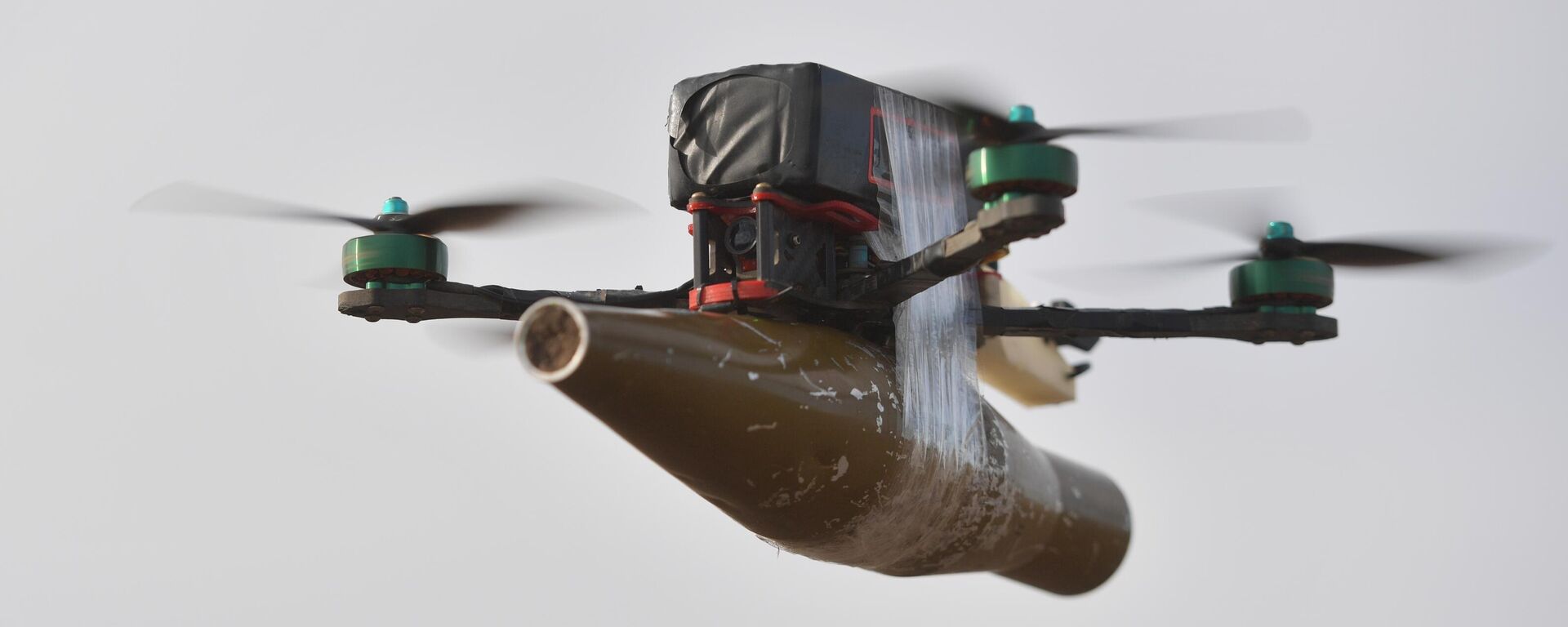https://sputnikglobe.com/20240303/russias-piranha-uav-developer-sheds-light-on-drones-unique-video-frequencies-1117095917.html
Russia’s Piranha UAV Developer Sheds Light on Drone’s Unique Video Frequencies
Russia’s Piranha UAV Developer Sheds Light on Drone’s Unique Video Frequencies
Sputnik International
The Russian FPV (First Person View) drone "Piranya-10", which hit the US tank Abrams handed over to Kiev, is capable of carrying up to 4.5 kilograms of payload, the head of public relations of the Simbirsk Design Bureau, which developed the drone, told Russian media.
2024-03-03T07:21+0000
2024-03-03T07:21+0000
2024-03-03T07:21+0000
military
russia
ukraine
ministry of defense
m1a2 abrams
uav
drone
drone strikes
https://cdn1.img.sputnikglobe.com/img/07e8/02/18/1116953537_0:0:3075:1731_1920x0_80_0_0_8f8765931313d9b4dcefdc08e35cb0ee.jpg
Russia's Piranha-10 FPV (first person view) drone, which was used to hit a US-made Abrams tank that had been handed over to Kiev, is capable of carrying a payload of up to 4.5 kilograms , the head of public relations of the Simbirsk Design Bureau, which developed the drone, told Russian media.The Simbirsk Design Bureau produces two unmanned aerial vehicle (UAV) models - the Piranha-7 and Piranha-10. The payload of the first model is 2.5 kilograms. The drones differ in frame size and engines. The Piranha-10 is equipped with more powerful motors and wide propellers. The approximate cost of the drone is 50,000 rubles ($550).A representative of the Simbirsk Design Bureau noted that the advantage of Piranha UAVs is the use of unique video frequencies.Since last winter, the Simbirsk Design Bureau has delivered more than 8,000 drones to the Russian military, and the company produces more than a hundred units every day.
https://sputnikglobe.com/20240301/exclusive-how-us-tank-worth-millions-of-dollars-was-defeated-by-cheap-russian-drone-1117079419.html
russia
ukraine
Sputnik International
feedback@sputniknews.com
+74956456601
MIA „Rossiya Segodnya“
2024
Sputnik International
feedback@sputniknews.com
+74956456601
MIA „Rossiya Segodnya“
News
en_EN
Sputnik International
feedback@sputniknews.com
+74956456601
MIA „Rossiya Segodnya“
Sputnik International
feedback@sputniknews.com
+74956456601
MIA „Rossiya Segodnya“
russia’s piranya drone, destroyed abrams tank, us tank abrams, drone
russia’s piranya drone, destroyed abrams tank, us tank abrams, drone
Russia’s Piranha UAV Developer Sheds Light on Drone’s Unique Video Frequencies
The first US-made Abrams tank used by Ukraine in the special military operation zone was destroyed by Russian forces in the Avdeyevka area last month.
Russia's Piranha-10 FPV (first person view) drone, which was used to hit a US-made Abrams tank that had been handed over to Kiev, is capable of carrying a payload of up to 4.5 kilograms , the head of public relations of the Simbirsk Design Bureau, which developed the drone, told Russian media.
The Simbirsk Design Bureau produces two
unmanned aerial vehicle (UAV) models - the Piranha-7 and Piranha-10. The payload of the first model is 2.5 kilograms. The drones differ in frame size and engines. The Piranha-10 is equipped with more powerful motors and wide propellers. The approximate cost of the drone is 50,000 rubles ($550).
A representative of the Simbirsk Design Bureau noted that the advantage of Piranha UAVs is the use of unique video frequencies.
"If the manufacturer uses standard video transmitters, the means of electromagnetic warfare can very easily suppress the signal. The drone loses either control or the image as soon as it begins to move away from the operator at a distance of 100-500 meters. In our case, however, the image is stable and crystal clear, as if there was no electromagnetic warfare influence. We first tested these frequencies at the Era military innovative technopolis of the Russian Defense Ministry, and we turned out to be the only manufacturer in Russia whose UAV did not crash," he said.
Since last winter, the Simbirsk Design Bureau has delivered more than 8,000 drones to the Russian military, and the company produces more than a hundred units every day.



